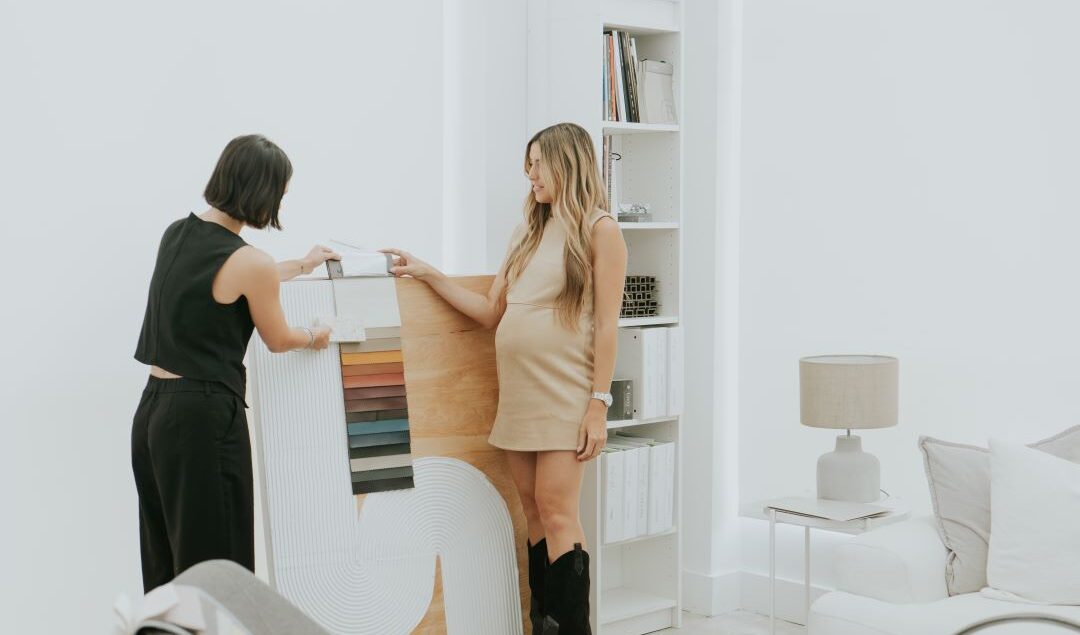Design Stories: Wallpapers and Wallcoverings
We want to talk about this decoration trend that has made a strong comeback in recent years and explore its origins and evolution. To make the reading smoother, we made a bulleted list with the key facts
🌸Wallpaper has been around for centuries! It all started in China, where people invented paper around 105 AD. They were the first to use paper to decorate walls.
🌸In the 16th century, wallpaper made its way to Europe. Initially imported from China, it carried a hefty price tag and was regarded as a symbol of status. As a result, it was primarily embraced by the aristocracy and the upper class, who had the means to afford such luxury.
🌸The first European factories opened in France and England in the 17th century.
🌸The introduction of mass production and innovative printing techniques, such as block printing and screen printing, contributed greatly to making wallpaper more affordable. It became a practical option for decorating middle-class homes, opening up new possibilities for creative expression and adding a touch of style to everyday living spaces.
🌸At the beginning of the 20th century, it was common to see wallpaper in homes throughout Europe. It was also highly popular in the United States, especially in Victorian houses.
🌸In the 1950s, a new player entered the wallpaper scene: vinyl wallpaper. Vinyl offers several advantages, including increased durability and resistance to moisture and stains when compared to traditional wallpaper. It is easy to clean (with a sponge or damp cloth) and install, making it a convenient choice for commercial venues.
Before we move on, let’s clear up something important about “Wallpaper” and “Wallcovering.” People often use these terms interchangeably, but there’s a difference in what they’re made of. Wallpaper is made of paper, while Wallcovering is crafted from sturdier materials like vinyl, fiberglass, cork, wood veneer, textile, and more. Another thing to keep in mind is that while you can tackle wallpaper installation on your own, wallcoverings typically call for a pro installers’ touch.
Wallpaper: This is the traditional type made just of paper. It has low resistance to rubbing and washing and needs more frequent replacement.
Non-Woven: It is made of cellulose and polyester fibers that mimic the appearance of the fabric. Resistant to water and easy to clean, it is more expensive than the paper one but has greater durability. It is easy to apply and remove without leaving residues on the wall. Another benefit is that it allows the wall to breathe, preventing moisture and condensation issues. Additionally, it has a similar appearance to traditional paper, with matte or slightly textured finishes.
Vinyl: It shares similarities with non-woven wallcovering, but it features a PVC (polyvinyl chloride) coating. The key benefits of vinyl wallcovering include the opportunity to incorporate captivating textures and finishes, including glossy variations and intricate reliefs that cannot be achieved with the regular or non-woven wallcovering. It cleans effortlessly and has exceptional durability. However, it’s worth noting that vinyl wallcovering is less breathable and can be more challenging to remove.
Paintable: It is a type of wallcovering that can be painted over. Due to its thickness, it is excellent for concealing wall imperfections. One of its main advantages is that it can be customized according to individual preferences. It can also be repainted multiple times.
Contract: Specifically designed for commercial use or institutional and public environments, this type of wallcovering is suitable for high-traffic areas and withstands wear and tear. It is washable and often fire-resistant as well.
Check out these photos of Mico’s projects where we combined two wall coverings. Our goal is to show you how different styles can come together in perfect harmony, to create a unique personality for commercial spaces. [Click on the pics to enlarge them].
Say Tea and Smile
At Say Tea and Smile, we used a matte finish vertical striped design that adds an elegant and timeless accent, along with a non-woven wallcovering featuring detailed Chinese-inspired floral and bird motifs. Chinoiserie is an artistic, architectural, and design style that originated in Europe in the 17th century and is characterized by the use of Chinese motifs, particularly in furniture, porcelain, and wallpapers. The result is a chic and inviting ambiance that reflects Say Tea and Smile’s brand. What do you think? More Photos: Say Tea and Smile
Cafe Americano
For Cafe Americano, we selected a palm tree design to infuse the lounge area with Miami’s vibrant spirit. Additionally, in the bathroom, we opted for a vintage arch pattern that harmonizes beautifully with the project’s overall concept. More photos: Cafe Americano
In Closing: One Recommendation
We’d like to recommend you the Cooper Hewitt, Smithsonian Design Museum. Located in the Carnegie Mansion on Fifth Avenue in New York, it houses a permanent collection of over 210,000 objects, including furniture, textiles, ceramics, and jewelry. One of its notable highlights is its extensive collection of wallpapers, showcasing unique designs from the 18th century to the present day.
Its website provides access to the digitized collection, and we particularly recommend exploring the “Women Making Wallpaper” exhibit, which celebrates over 100 years of wallpaper design by women.
In addition, the museum features an Immersion Room, an interactive space that allows visitors to experience the extraordinary wallpaper collection in a unique way. You can select wallpapers to be projected on the walls, from floor to ceiling, creating an immersive experience. There’re also explanatory audio guides for each piece with details about the designs and their authors. You can find more information at: https://www.cooperhewitt.org/









